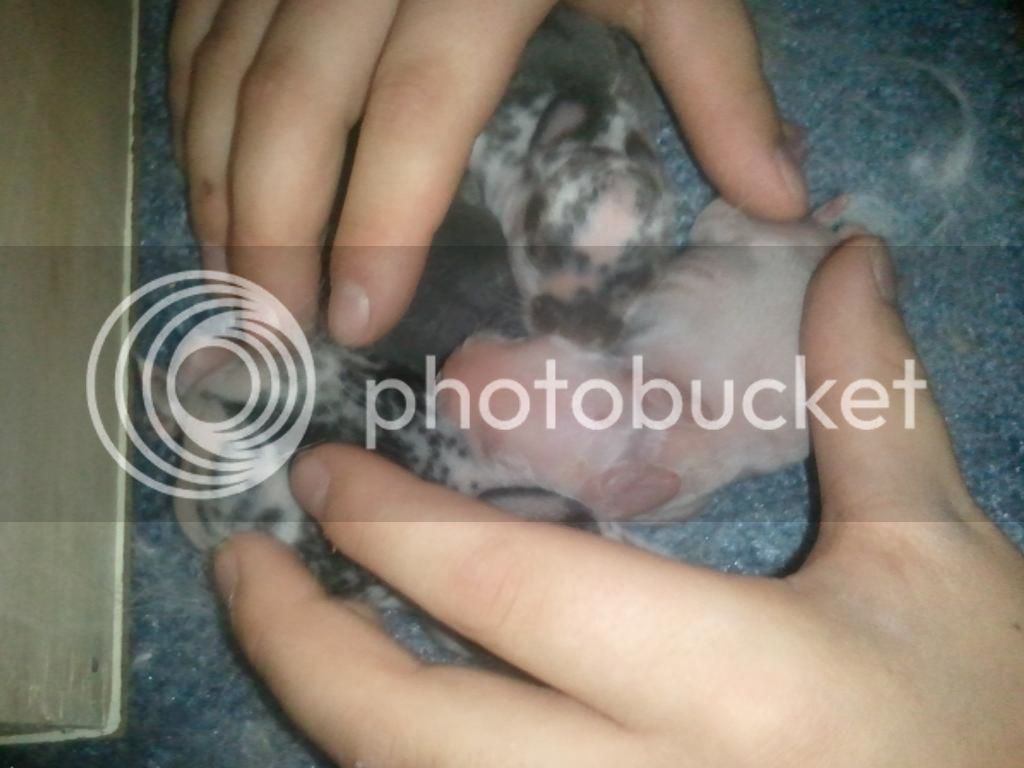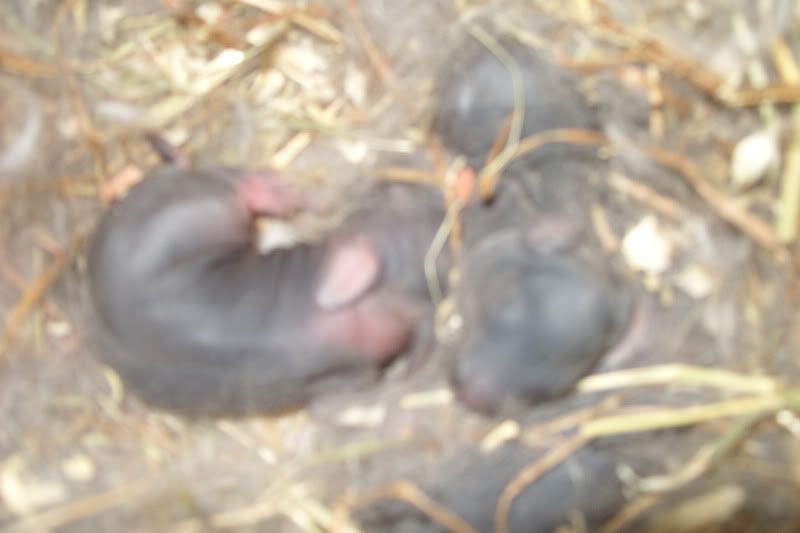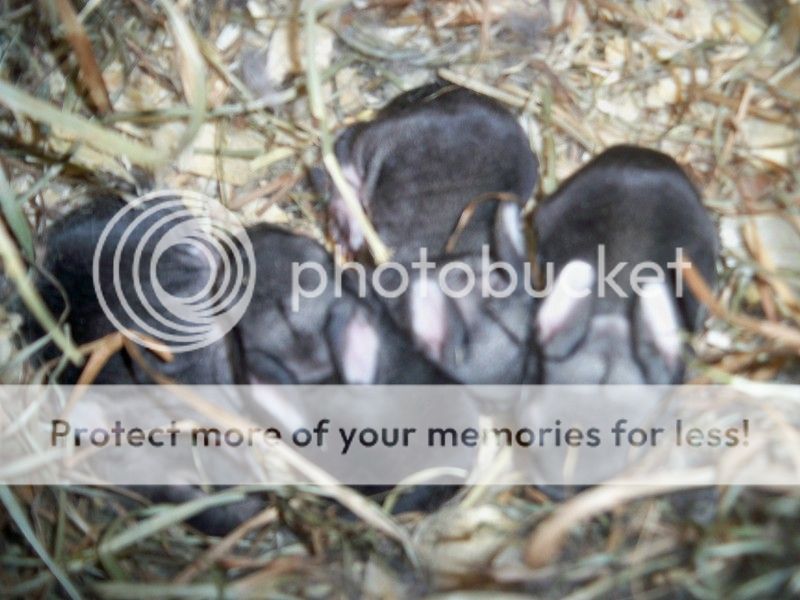Okay, just wondering if all of you dear color genetic geniuses have any guesses on colors of my AFL kits.
Mom is Broken Sable Grandparents- Sable Point and REW Great Grandparents- Broken Tort, Sable Point, REW, and Siamese Smoke Pearl GG Grandparents- Sable Points, Torts, REW's, and Smoke Pearl
Dad is Orange Grandparents- Broken Chin and Broken Black Great Grandparents- Broken Chestnut and Chestnut GG GrandParents- Chinchillas, Blacks, and Orange
5 DAY OLD KITS
#1-looks broken black and I'm pretty sure it's staying that way
#2-born solid pink and is now turning white
#3-looks broken blue, but I know that's not it
#4-looks blue, but I know that's not it
Guess away!
Here they are yesterday

Mom is Broken Sable Grandparents- Sable Point and REW Great Grandparents- Broken Tort, Sable Point, REW, and Siamese Smoke Pearl GG Grandparents- Sable Points, Torts, REW's, and Smoke Pearl
Dad is Orange Grandparents- Broken Chin and Broken Black Great Grandparents- Broken Chestnut and Chestnut GG GrandParents- Chinchillas, Blacks, and Orange
5 DAY OLD KITS
#1-looks broken black and I'm pretty sure it's staying that way
#2-born solid pink and is now turning white
#3-looks broken blue, but I know that's not it
#4-looks blue, but I know that's not it
Guess away!
Here they are yesterday











